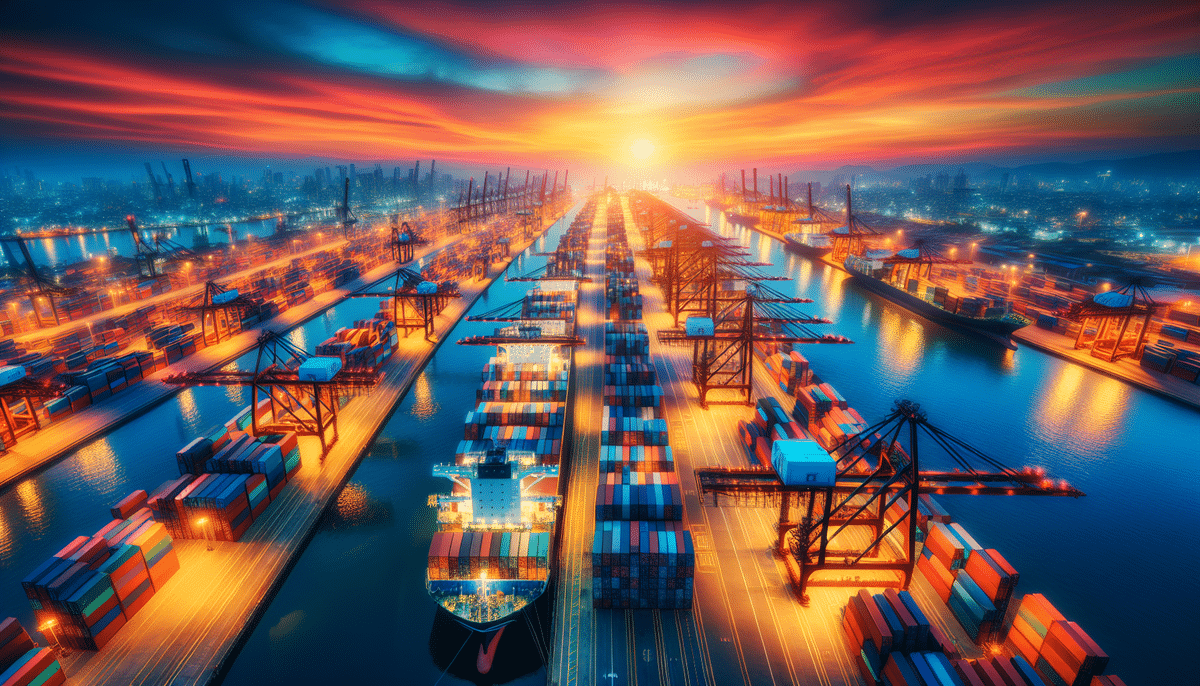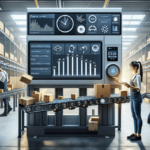Optimizing Your Supply Chain with Transtainer Solutions
In today's fast-paced business environment, optimizing supply chain management is essential for companies aiming to maintain a competitive edge. Integrating innovative technologies, such as Transtainer solutions, can significantly simplify and streamline the supply chain process. Transtainer solutions have increasingly become a vital component in modern supply chains, offering enhanced efficiency and reliability.
Understanding the Importance of Supply Chain Optimization
The supply chain encompasses a series of stages including raw material sourcing, production, warehousing, transportation, and delivery. Inefficiencies at any stage can lead to delayed deliveries, elevated transportation costs, and diminished customer satisfaction. Effective supply chain optimization addresses these challenges by identifying and eliminating bottlenecks, thereby boosting efficiency, productivity, and profitability.
One of the primary advantages of supply chain optimization is enhanced visibility and transparency. Optimized supply chains provide businesses with a comprehensive understanding of their operations, enabling better decision-making, improved risk management, and increased agility in adapting to market changes. According to a 2023 Supply Chain Report by ShipScience, companies that prioritize visibility are 30% more likely to achieve higher customer satisfaction rates.
Additionally, optimizing the supply chain contributes to reducing environmental impacts by minimizing waste and lowering carbon emissions, aligning with global sustainability goals.
The Role of Transtainer Solutions in Supply Chain Optimization
Transtainer solutions are engineered to simplify and streamline various supply chain management processes. These heavy-duty containers are primarily used for transporting goods, especially in international trade. Their stackable design makes them ideal for intermodal transportation, facilitating seamless movement across trucks, ships, and trains. Transtainer solutions are renowned for their durability, security, and versatility, making them a staple in efficient supply chain operations.
One significant benefit of utilizing Transtainer solutions is the reduction in transportation costs. By maximizing the volume of goods per shipment, companies can decrease the number of trips required, thereby lowering overall transportation expenses. Furthermore, the ease of loading and unloading Transtainers reduces the time and labor needed for handling goods, leading to faster and more efficient supply chain processes that ultimately enhance profitability.
Benefits of Using Transtainer Solutions for Supply Chain Management
Transtainer solutions offer numerous benefits for supply chain management:
- Increased Efficiency and Productivity: Simplifies transportation and handling, leading to smoother operations.
- Cost Reduction: Efficient stacking and loading reduce transportation costs.
- Enhanced Security: Minimizes the risk of damage, theft, or loss of goods during transit.
- Real-Time Tracking: Provides visibility and control over the supply chain through advanced tracking technologies.
- Flexibility and Customization: Can be tailored to meet specific business and industry needs.
- Environmental Sustainability: Reduces carbon footprint by optimizing space usage and minimizing trips.
Implementing Transtainer solutions also supports businesses in achieving sustainability targets. According to the 2023 Sustainability Report by ShipScience, companies using Transtainer solutions have reduced their carbon emissions by up to 20% through optimized transportation logistics.
How Transtainer Solutions Improve Supply Chain Efficiency and Productivity
Transtainer solutions enhance supply chain efficiency and productivity through several key features:
- Stackability: Allows for efficient transportation and storage, maximizing space utilization.
- Durability: Designed to withstand harsh weather conditions and rough handling, ensuring the safety of goods.
- Versatility: Suitable for various types of goods and adaptable to different transportation modes.
- Eco-Friendly Design: Made from recyclable materials and reusable, promoting sustainability.
These features not only streamline operations but also contribute to long-term cost savings by reducing the need for frequent equipment replacements and minimizing waste.
Moreover, the adaptability of Transtainer solutions allows businesses to customize their supply chain operations, reducing waste and enhancing overall efficiency. A study by ShipScience Industry Insights indicates that customized Transtainer implementations can lead to a 15% increase in supply chain efficiency.
Different Types of Transtainer Solutions for Supply Chain Management
Transtainer solutions come in various types to cater to diverse supply chain needs:
- Dry Containers: Ideal for transporting general cargo, offering protection from environmental elements.
- Refrigerated Containers: Designed for perishable goods such as fruits, vegetables, and pharmaceuticals, maintaining necessary temperature controls.
- Ventilated Containers: Suitable for goods requiring adequate ventilation, including chemicals, textiles, and certain food products.
Specialized containers are also available for specific industries. For instance, containers for hazardous materials are reinforced and equipped with safety features like emergency vents and spill containment systems. Open-top containers, with removable tops, facilitate the easy loading and unloading of oversized or bulky cargo, making them suitable for heavy machinery and construction materials.
Choosing the right type of Transtainer is crucial for ensuring the safe and efficient transport of goods. Businesses should assess their specific requirements to select the most appropriate container type.
Transtainer Solutions for Managing Inventory and Reducing Stock-Outs
Transtainer solutions play a pivotal role in inventory management and reducing stock-outs. By providing secure and organized storage options, especially within warehouse facilities, Transtainers ensure that goods are readily available when needed. This organization minimizes the risk of stock-outs, thereby enhancing customer satisfaction and maintaining a competitive market position.
Additionally, the portability of Transtainers facilitates the smooth movement of goods between locations, which is essential for businesses operating across multiple sites or those requiring long-distance transportation. The ability to quickly and efficiently transport goods reduces lead times and ensures that inventory levels are maintained effectively.
Customization options, such as varying sizes and configurations, allow businesses to optimize their storage and transportation processes. This flexibility leads to cost savings and improved operational efficiency, as illustrated in case studies from companies that have successfully integrated Transtainer solutions into their inventory management systems.
Optimizing Shipping Logistics with Transtainer Solutions
Transtainer solutions are instrumental in optimizing shipping logistics by enabling the use of the most efficient routes and transportation modes. Efficient loading and unloading processes reduce the time and costs associated with transportation, leading to faster delivery times and lower expenses. Moreover, the secure design of Transtainers minimizes risks during transit, ensuring the safe delivery of goods.
By facilitating seamless intermodal transportation, Transtainers enhance the flexibility and responsiveness of the supply chain. This adaptability is critical in responding to fluctuating market demands and unexpected disruptions, thereby maintaining the integrity and reliability of shipping logistics.
Implementing Transtainer solutions can also contribute to better resource utilization. According to the 2023 Logistics Optimization Report by ShipScience, companies using Transtainer solutions have reported a 25% improvement in shipping efficiency.
Reducing Transportation Costs with Transtainer Solutions
One of the most significant benefits of Transtainer solutions is their ability to reduce transportation costs. By enabling the transport of larger quantities of goods per shipment, the number of trips required is minimized, leading to substantial cost savings. Additionally, the durability and longevity of Transtainers mean they do not need frequent replacement, further lowering equipment costs.
Transtainer solutions also enhance fuel efficiency by optimizing space usage, allowing for more goods to be transported with the same amount of fuel. This not only reduces transportation costs but also contributes to environmental sustainability by lowering fuel consumption and associated emissions.
Businesses can achieve an average of 20% cost savings in transportation by integrating Transtainer solutions, as highlighted in various industry analyses.
Managing Risks in the Supply Chain with Transtainer Solutions
Effective risk management is crucial in supply chain operations to ensure the safe and secure transport of goods. Transtainer solutions mitigate various risks by providing a robust and reliable means of transportation. Their design withstands harsh weather conditions and rough handling, reducing the likelihood of damaged or lost goods.
Additionally, the secure locking mechanisms and tamper-evident features of Transtainers enhance the security of transported goods, mitigating risks of theft and unauthorized access. This reliability is essential for maintaining the financial stability and reputation of businesses within the supply chain.
Implementing Transtainer solutions as part of a comprehensive risk management strategy can significantly reduce potential financial losses and enhance overall supply chain resilience.
Implementing a Successful Supply Chain Optimization Strategy with Transtainer Solutions
Successful supply chain optimization with Transtainer solutions involves a strategic approach:
- Assess Transportation Needs: Analyze current transportation requirements and identify areas for improvement.
- Evaluate Transtainer Options: Select the Transtainer types that best match the specific needs of the business.
- Integrate into Supply Chain Management: Seamlessly incorporate Transtainer solutions into existing supply chain systems.
- Monitor and Adjust: Continuously monitor performance and make necessary adjustments to optimize operations.
By following these steps, businesses can effectively implement Transtainer solutions, leading to optimized supply chain processes and improved operational outcomes.
Best Practices for Integrating Transtainer Solutions into Your Supply Chain Management System
To ensure a smooth integration of Transtainer solutions into supply chain management systems, adhere to the following best practices:
- Identify Business Needs: Clearly define the specific requirements and objectives of the supply chain operations.
- Select the Appropriate Transtainer Solution: Choose Transtainers that align with the nature of the goods and transportation methods.
- Train Staff: Provide comprehensive training to employees on the proper handling and utilization of Transtainer solutions.
- Implement Tracking Systems: Utilize advanced tracking technologies to monitor the movement and condition of goods.
- Evaluate Performance: Regularly assess the performance of Transtainer solutions and make adjustments as needed.
Following these best practices ensures that the integration is effective, leading to enhanced supply chain efficiency and reduced operational disruptions.
Tips for Selecting the Right Transtainer Solution for Your Business Needs
Selecting the appropriate Transtainer solution requires careful consideration of several factors:
- Type of Goods: Determine whether the goods are perishable, hazardous, oversized, or require special handling.
- Transportation Distance: Consider the distance and mode of transportation to choose Transtainers that best suit the logistics.
- Volume and Weight: Assess the volume and weight of goods to select Transtainers with appropriate capacity and strength.
- Customization Needs: Identify any specific customization requirements, such as temperature control or ventilation.
- Budget Constraints: Balance the cost of Transtainer solutions with the expected benefits and savings.
By thoroughly evaluating these factors, businesses can select Transtainer solutions that effectively meet their operational needs and contribute to overall supply chain efficiency.
Case Studies of Successful Implementation of Transtainer Solutions in the Supply Chain Industry
Several companies have successfully integrated Transtainer solutions into their supply chains, yielding significant benefits:
- Global Retailer: Implemented Transtainer solutions to streamline its transportation processes, resulting in a 25% reduction in shipment numbers and a 15% decrease in transportation costs. Delivery times improved by 20%, and the incidence of goods damage was reduced by 30%.
- Food Distributor: Utilized refrigerated Transtainer solutions to enhance inventory management and transportation of perishable goods. This led to a 10% reduction in food waste and ensured that products remained fresh upon delivery, thereby increasing customer satisfaction.
- Construction Company: Adopted open-top Transtainer solutions for transporting oversized machinery and materials. The ease of loading and unloading improved operational efficiency by 18% and minimized delays in construction projects.
These case studies demonstrate the diverse applications and substantial benefits of Transtainer solutions in various industries, highlighting their role in driving supply chain optimization.
Future Trends and Advancements in Transtainer Technology for Improved Supply Chain Optimization
The future of Transtainer technology holds promising advancements aimed at further enhancing supply chain optimization:
- Smart Transtainers: Integration of IoT sensors and automation technologies to monitor the condition of goods in real-time, providing actionable data for inventory management and predictive analytics.
- Eco-Friendly Innovations: Development of Transtainers made from sustainable materials and incorporating energy-efficient designs to reduce environmental impact.
- Modular Designs: Enhanced modularity allowing for greater flexibility and adaptability in various supply chain scenarios.
- Advanced Security Features: Implementation of advanced locking mechanisms and tamper-proof technologies to further secure transported goods.
These advancements are set to revolutionize supply chain management by providing even more efficient, secure, and sustainable solutions. Businesses that adopt these emerging technologies will be well-positioned to meet future challenges and capitalize on new opportunities in the global marketplace.
Conclusion
Transtainer solutions are indispensable in contemporary supply chain management, offering efficient, secure, and versatile means of transporting goods globally. By integrating Transtainer solutions, businesses can optimize their operations, reduce transportation costs, and enhance customer satisfaction. As technology continues to evolve, Transtainer solutions will incorporate more advanced features, further streamlining supply chain processes and supporting sustainable business practices. Embracing these solutions is essential for businesses aiming to thrive in an increasingly competitive and dynamic market landscape.
For more information on how Transtainer solutions can transform your supply chain, visit the ShipScience website.






















